Energy-Efficient Doors: Save on Bills and Create a Greener Home
Homeowners understand the need to conserve energy and make living environments more sustainable. A large proportion of household power is consumed in heating and cooling. But what if your doors were able to reduce your monthly power consumption? Doors act as a barrier between the external and internal environments and affect the quality of heating and cooling in your house. With energy-efficient doors, you can eliminate unwanted heat transfer to ensure that your place is warmer in winters and cooler in summers.
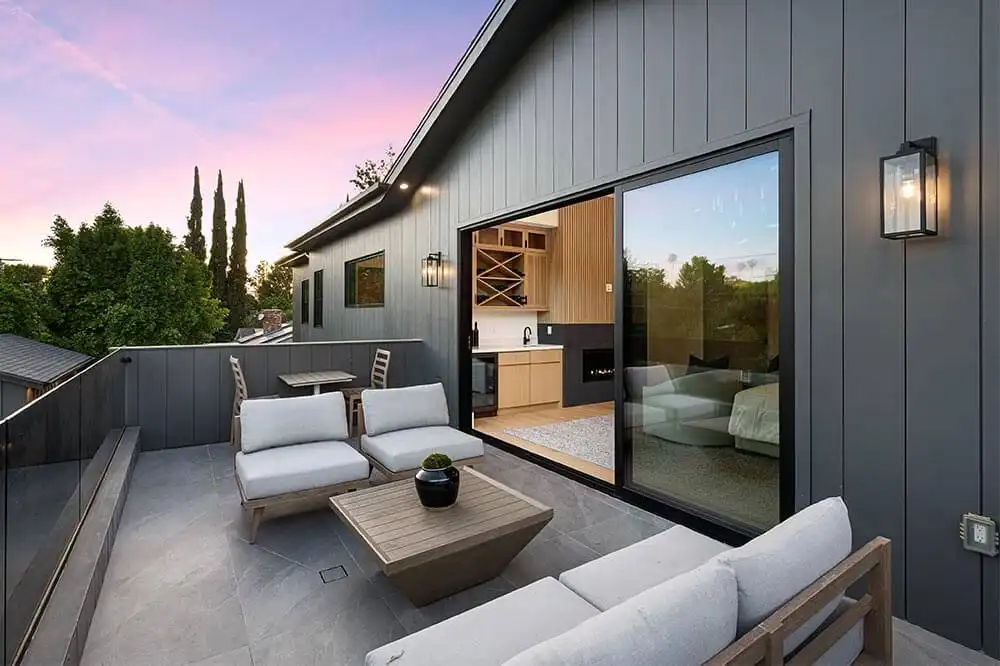
These eco-friendly doors save not only energy bills, but also your carbon footprint. Continue reading if you are interested in saving money on energy bills and running a more environmentally friendly and sustainable household. This guide will cover the advantages of the energy-efficient doors, their main features, and how to select the most suitable door for your house. Let's dive in!
Why Doors Matter in Home Energy Efficiency?
Want to make your space more comfortable, reduce energy expenses, and contribute to the green home improvement movement? Consider upgrading energy efficient door solutions. Here’s why it matters.
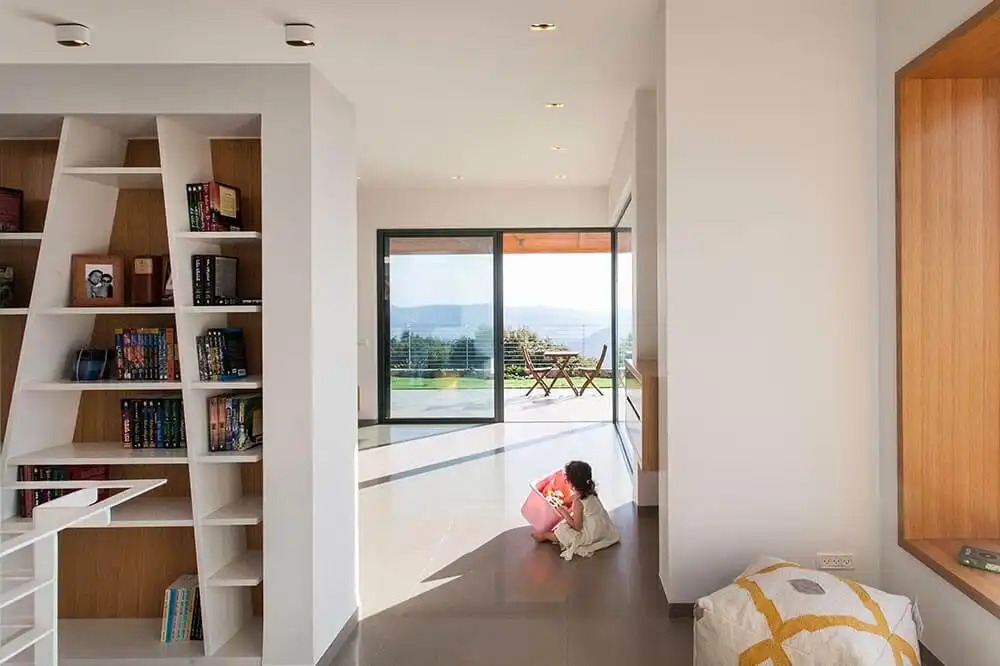
Energy Loss Statistics
Up to 30% of a home’s heating or cooling can be lost through poorly insulated doors. Such a massive energy waste highlights the need to choose energy-efficient doors that preserve indoor condition to enable homeowners to save money and make the process sustainable.
Physics of Heat Transfer
Heat conducts naturally through warmer to cooler regions. With thin or hollow doors, this transference can occur very quickly. Energy loss is also further hastened by unsealed door frames and poor seals. Installing energy-efficient doors with insulated cores and tight seals guarantees that conditioned air stays where you need it.
Comfort Impact
Drafty doors create an uncomfortable room environment with heat pockets in summer and cold spots in winter that may interfere with the day-to-day life. Energy-efficient doors eliminate drafts, which keeps the indoor temperatures constant, minimizes the workload on the HVAC system, and makes the home more comfortable for the occupants throughout the year.
Long-Term Financial Effect
Many homeowners spend hundreds of dollars a year paying to cover heat loss or gain. These costs are minimized by investing in energy-efficient doors, which can generate tangible savings in the long run. Plus, for homeowners looking to sell or rent their property, eco-friendly practices, like energy-efficient doors, can help fetch better deals and more profit.
Key Features of Energy-Efficient Doors
The choice of materials, core insulation, glazing, and weatherproofing of a door all affect its performance and durability. So, it is important to understand the characteristics of these eco-friendly options.
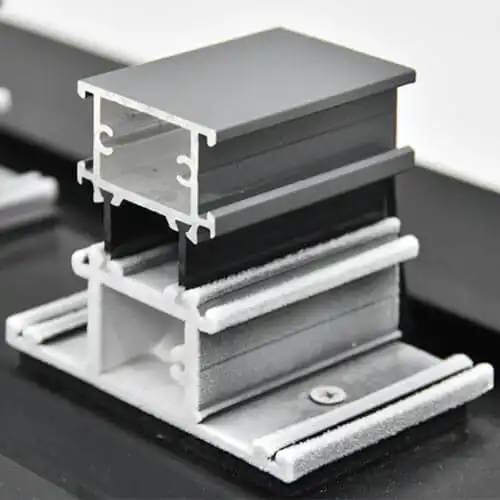
Aluminum Thermal Break
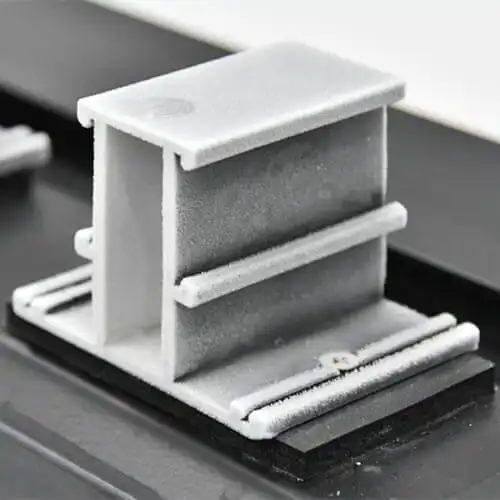
Aluminum Non-Thermal Break
Materials
Energy-efficient doors are readily available in several different materials:
- Aluminum doors are known for their modern design and exceptional durability. They resist rust, corrosion, and fading, making them ideal for both residential and commercial use. Although aluminum is an excellent conductor of heat, modern designs include thermal breaks and insulated layers that reduce heat transfer and improve energy efficiency. Lightweight yet strength, they feature narrow frames and large glass pane that allow more natural light.
- uPVC doors are highly valued for their low maintenance and affordability. They are resistant to moisture, warping, and pests, making them suitable for various climates. They multi-chamber frame design creates natural air pockets than improve thermal and sound insulation, keeping indoor spaces comfortable year-round. Easy to clean and long-lasting, uPVC types come in a variety of colors and finishes.
- Fiberglass doors have a high insulation and are lightweight, strong, and free of warping. Most of them have foam cores, which increase thermal performance. For homeowners who don’t want to compromise between efficiency and style, fiberglass doors are a perfect energy-saving solution thanks to their low maintenance, long life span, and chic look.
- Steel doors are much stronger and more secure. They compete well with fiberglass in terms of insulation, but may dent and need to be painted sometimes. Other than that, these doors are extremely durable and efficient, which makes them a viable choice when homeowners looking to conserve energy and enhance safety in their homes.
- Wood doors provide classical beauty and an effect of the naturalism. They can be very energy-efficient when used together with insulating cores or panels. Regular maintenance is often necessary, depending on the type of wood, gaps, and warping. Sustainable door options often consist of sustainably sourced wood to meet the needs of the eco-friendly consumers.
Core Insulation
Selecting doors with the right insulation ensures consistent indoor temperatures, reduces energy costs, and supports broader green home improvement efforts. Here are the two main considerations:
- The core type and material are quite important in defining the energy-efficient performance of a door. Solid-core doors are better than hollow-core designs in preventing the passage of heat thus. The polyurethane and polystyrene foam are good thermal resistant materials.
- The R-value, which is the degree of insulation, determines a material’s resistance to thermal transfer. The higher the R-value of an energy-efficient door, the better the insulation will be.
Together, core insulation type and R-value can help homeowners understand the performance and efficiency of different options available in the market.
Glazing Options (Glass Inserts)
Doors with glass inserts allow natural light to infiltrate the home. However, glass inserts can affect the energy-efficiency of a door. This is where low-E coating, a feature of modern energy-efficient doors, comes in. It helps minimize heat loss without effecting sunlight penetration. Insulation can be improved by filling the gaps between panes with a gas like argon or krypton. Homeowners who are interested in eco-friendly doors can balance between design and functionality by purchasing doors with high-level glazing. Double or triple glazing is preferred as compared to a single pane design. The right glass inserts complement core insulation and seals, contributing to effective energy-saving home upgrades.
Besides doors, if you’re curious about glazing options for windows, check out our article ‘Single Pane vs. Double Pane Windows | How Should I Choose?’
Weatherstripping & Seals
Seal the gaps around a door to facilitate efficiency. Good weatherstripping ensures that there is no air leakage. The magnetic strips or compression seals have better closure than the old felt or rubber designs, so it’s always recommended to choose these options. Door sweeps on the bottom block also make sure that cold or hot air does not get inside.
The installation of these features on energy-efficient doors would maximize the advantage of insulation and decrease the load on the HVAC systems. It is a simple, yet highly effective step that can be taken by homeowners.
Benefits of Installing Energy-Efficient Doors
Still wondering why you should consider energy-efficient doors? Here are the top benefits of energy-efficient doors:
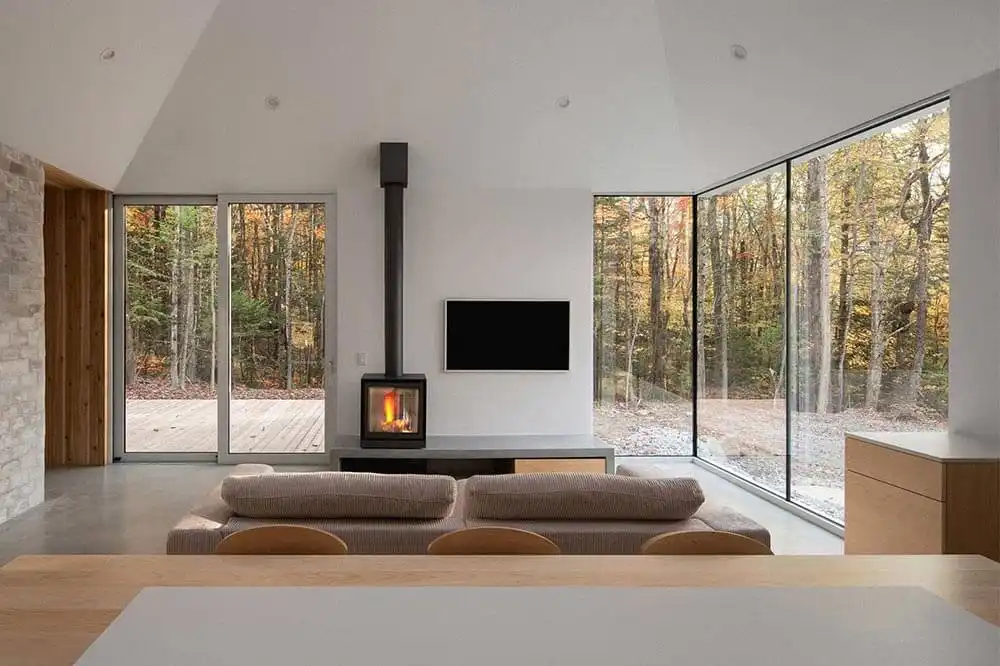
Lower Energy Bills
Heating and cooling costs can be reduced by up to 10-20% by replacing a non energy-saving door with a new energy-efficient door. For a family spending $1,000–$2,000 annually on heating and cooling, this could mean $100–$400 in yearly savings. These savings add up overtime and can be important to household budgets.
Improved Comfort & Climate Control
Energy-saving doors eliminate temperature variations around doors, which provide a better living atmosphere. Even rooms that have exterior doors maintain equal temperatures, which can lower the need to use the HVAC systems. Home offices, bedrooms, or living areas becomes more pleasant with draft and cold spots disappearing. Homes are cozier in winter and cooler in summer with enhanced insulation, which contributes to a healthy atmosphere on the whole. By installing energy-efficient doors, you combine comfort with green responsibility.
Eco-Friendly Living
Energy-efficient doors save on energy, which cuts down on the carbon footprint of the home. Additionally, a lot of contemporary doors are made of recycled steel, sustainable wood, or environmentally-friendly composites. For these reasons, making sustainable door choices is a responsible approach to the environment and shows the desire to make the ecological footprint of residential life smaller. By taking an active role in green home improvement, the homeowners engage in the larger scale sustainability efforts and also receive the perks of reduced bills and enhanced comfort.
Increased Home Value
Homebuyers are increasingly desiring homes that have energy efficient features. So, investing in energy-efficient doors can also make a home more marketable particularly when the doors are ENERGY STAR certified. The use of eco-friendly doors and the presence of sustainable door models indicate that the homeowner is focused on saving and comfort in the long term, which makes houses more appealing to potential buyers. Research indicates that 60-70% of the door cost could be recovered by the homeowner when reselling. Other than financial benefits, these doors increase the aesthetic value and responsible living, thus are a brilliant investment to for homeowners who intend to sell and support the green home improvement process.
Choosing the Right Energy-Efficient Door
Here are some things to keep in mind when choosing a energy-efficient door for your home:
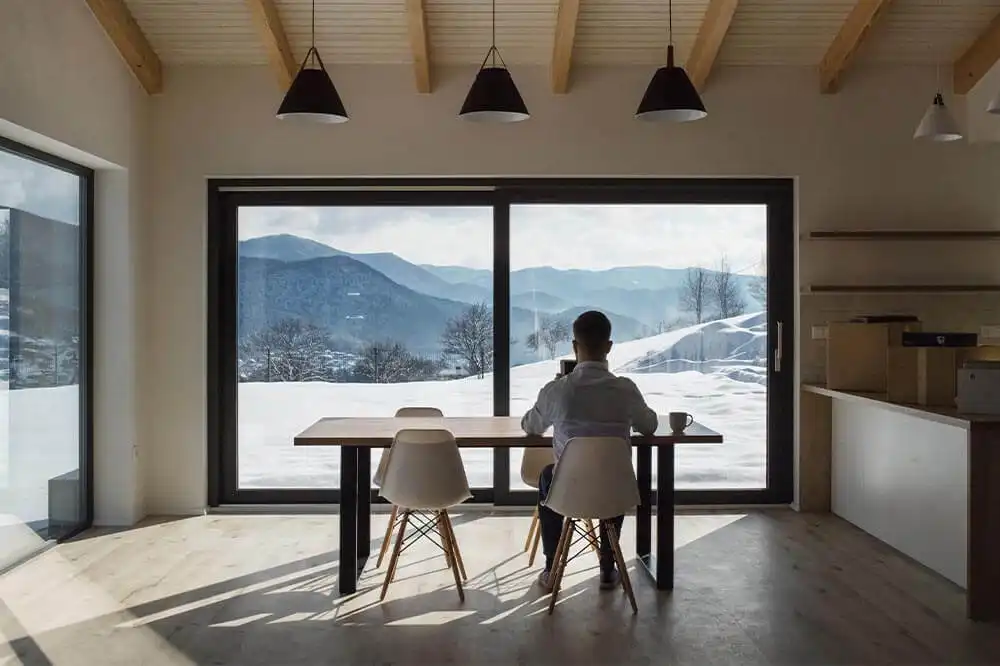
Certification
Opt for doors with ENERGY STAR labels because such certification means that the door you have chosen meets efficiency standards. A certified door will provide reliable performance, maximize long-term benefits, and surely support sustainability goals.
Climate Considerations
In cold climates, prioritize doors with high insulation and triple-pane glass inserts. Doors with good cores and advanced glazing help retain heat throughout harsh winters, contributing to significant energy-saving home upgrades.
In hot climates, low-E glass is better because it reflects the heat and at the same time transmits light. Properly insulated energy-efficient doors also help reduce air conditioning requirements and maintain cooler interiors.
In humid climates, doors can wrap or swell and compromise efficiency. Fiberglass and steel doors are known for durability and they also resist moisture while providing insulation. The right sustainable door option ensures consistent performance in humid environments.
Cost
These doors come in various budgets. The cheaper models offer simple insulation and high-end models often feature smart capabilities, personalized woodwork, and enhanced glazing. Remember, quality is important. Even with higher upfront costs, a high-quality door is a worthy investment as it will bring more savings in the long run.
Conclusion
Doors do not just serve as entry points, but they are critical in home energy efficiency. The introduction of energy-efficient doors will increase comfort, minimize monthly payments, and contribute to sustainable living. Whether you choose a new ENERGY STAR-certified door or improve existing doors with insulation and seals, every adjustment makes a difference.
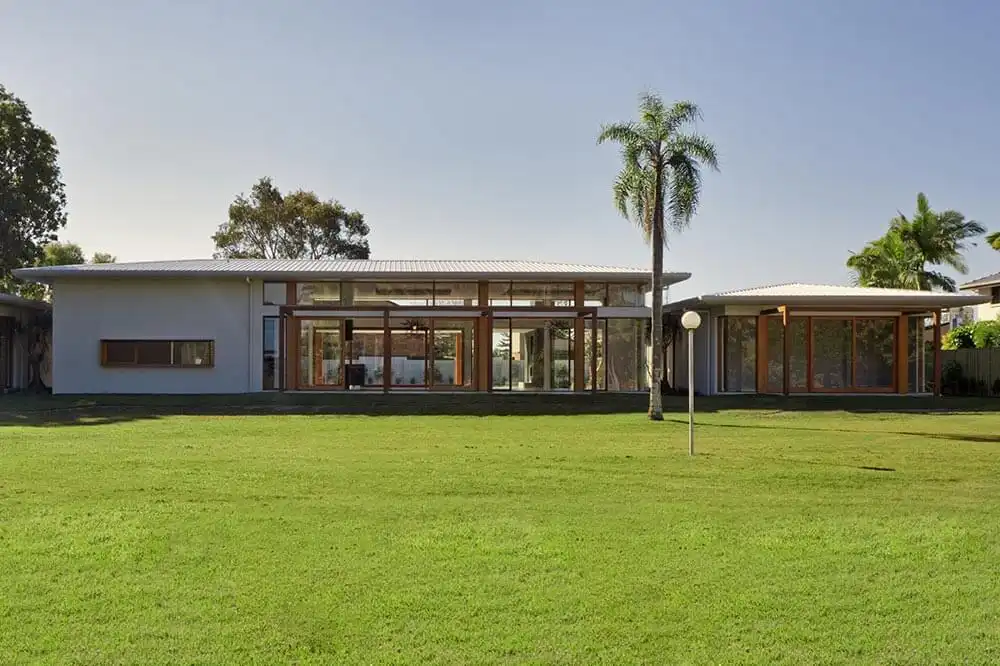
At WANJIA®, we offer a range of energy-efficient door options. We offer different colors, sizes, and materials so browse through our collection or get in touch with our experts. Let us help you find the perfect pick for your home.
Related to Energy-Efficient Door Blogs:
